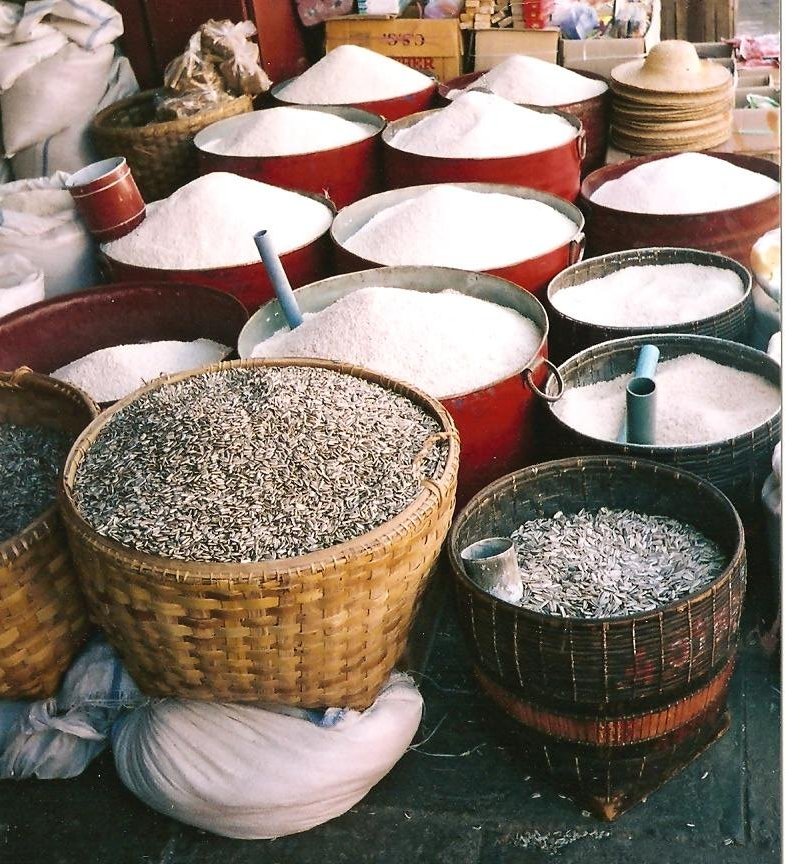All About Grains
Irene Wong
From Black Rice to Jasmine Rice in a market in Bagan, Myanmar.
Most of you know I am an old fashion traditional kinda gal. I mostly cook dishes where the place that I grew up with and places that I have spent some time in. Rice is the staple of life where I grew up. Such variety as fragrant Thai Jasmine Rice, California Wehani, reddish Brown color, to Shan Black Rice from Myanmar. We rarely bring exotic varieties into our daily home cooking. In addition to brown and white rice. Most of us are not even familiar that there are red, black and purple varieties and have different tastes. Certain kinds of rice when we want the grains to be loose and other kinds when we want them to stick together.
Emmer berries with pickled carrots, shashito peppers with drizzle of extra virgin olive oil.
Like the non GMO Farro, it's packed with nutrients, this grain can be used by some who need to follow a gluten-free diet. Emmer berries is another commonly referred to as Farro. I cook emmer like risotto for a scrumptious pilaf or salad during the warmer month. Some one I recalled said "NEW" ANCIENT GRAINS. These definitely aren't new grains, they have been popular and available for a long time. Emmer, the middle-sized grain, is the most common Italian cuisine, I first experienced it in San Gimignano, Italy, when a girl friend of mine invited me for her wedding...Most Farro grown and sold in the United States is Emmer, called Emmer-Farro. It is semi-pearled, as is the farro presently on the shelf at our Co-op.
Cook like brown Rice after a pre-soak: 2 or 3 to 1, water to grain; cook the better part of an hour on low heat till tender; drain off excess water and cover to plump the grains for a few minutes. I prefer to soak overnight (4 - 6 hour) rinsed well and add water to cover the grain, it should be ready in 15 minutes when the grain opens.
Pearls of quinoa toss with three types of yam and roasted rainbow carrots.
It's not till several years ago that I have been venturing into South America that I got fascinated with Quinoa while I was trekking in Chile. I think there are a lot of people, like me, who have no idea what quinoa, farro, couscous, stell cut oats, millet, etc., are or how to prepare or use them.
Quinoa is a grain-like seed that was domesticated in the Andes Mountains as early as 5000 years ago. It is not a true cereal grain. Its nutritional profile is notably better than common cereals than common cereals that I now make a big batch for part of my breakfast. It is very digestible and gluten-free. Most quinoa is imported from South America, but now so good to see markets are selling the ones that are grow places at high altitudes in Colorado, California, Oregon and Washington.
White and red quinoa - there is no significant nutritional difference and all varieties are a source of complete proteins. I store my quinoa in an airtight container in a cool, dark pantry (light is said to compromise vitamins in grains and seeds, and warmth can make them go rancid), or if you have room in the fridge.
Here is my recipe of quinoa pilaf that is all time favorite of my family.


